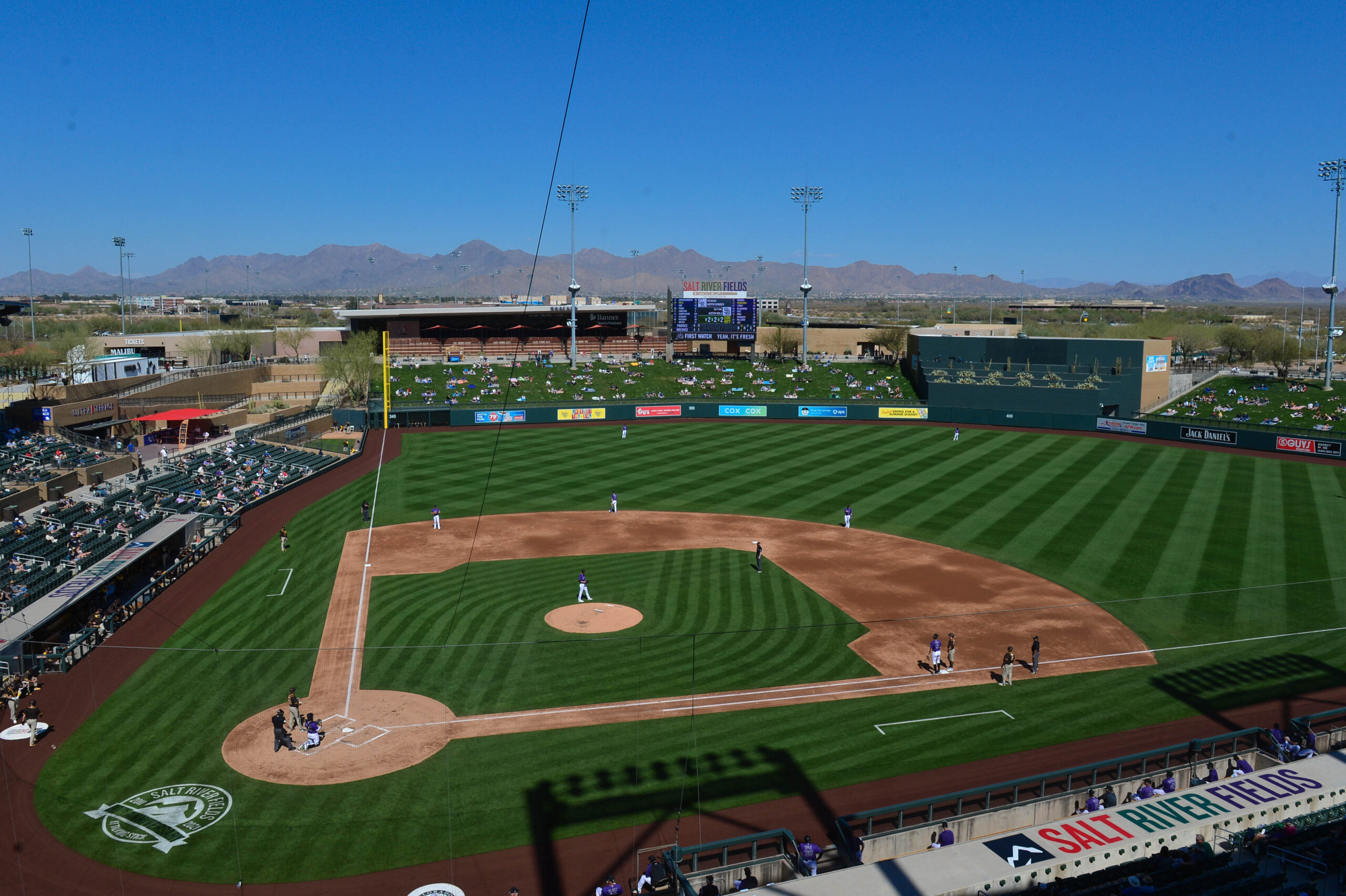© 2025 ALLCITY Network Inc.
All rights reserved.

After a one-year hiatus due to the pandemic, the Arizona Fall League returned to the Valley on Wednesday on a sunny, 75-degree Phoenix afternoon.
A meager $9 entry fee lets you pick your own seat as you watch baseball’s top prospects clash as part of a 39-day barrage of baseball awesomeness.
According to MLB.com, nearly 60 percent of Arizona Fall League participants crack major league rosters. Over the years, 19 MVPs, six Cy Young winners, 88 Gold Glove winners, 99 Silver Sluggers and over 300 All-Stars have played in the AFL on their journey to the Show.
Many call it the best-kept secret in baseball, but it’s time the word got out. “October baseball” is more than the postseason.
As the calendar turns to November and most of the country braces for winter, Phoenix still has sunshine and baseball stars of tomorrow in its backyard.
After a three-month break for the holidays, baseball paradise returns in mid-February as pitchers and catchers report to the Cactus League.
Fans across the country flock to Phoenix to see their favorite teams. It’s a golden opportunity to get autographs, take pictures and watch their favorite players practice. Yes, the manager did just drive by you on a golf cart.
And let’s be real here — the Cactus League easily trumps the Grapefruit League. That’s not a secret at all.
Spring training in the Valley offers less rain, better ballparks and close proximity between facilities, which allows fans to hop from one to another.
You can watch Ketel Marte murder baseballs in Scottsdale in the morning, and then drive 15 minutes to see Shohei Ohtani’s bullpen session in Tempe. Maybe scoot over to Seattle — I mean, Peoria — to see if Jarred Kelenic has revamped his swing.
You could feasibly watch 15 MLB teams in one day if practice schedules lined up properly. Consider it a challenge.
Granted, the level of access given to fans varies significantly from team to team. With that being said, every facility is open to the public on some level, and teams generally love the support.
In my experience, no team offers more access to players than our very own Arizona Diamondbacks.
As the hometown team, the D-backs also happen to have the nicest facility spring training baseball has to offer.

With the Superstition Mountains forming the backdrop, Salt River Fields at Talking Stick is a wonderful place to catch a game. It’s no wonder the D-backs seem to set a new single-game attendance record every year.
Spring training isn’t the only baseball event happening in the Valley in March, though.
The Society of American Baseball Research (SABR) is based in Phoenix, and they typically host their annual SABR Analytics Conference in the middle of the month. It’s an incredible networking opportunity that features cutting-edge statistical research, panel discussions with MLB front office staff and so much more.
Despite all of this, I’m not trying to suggest that Phoenix is a baseball town at heart. It probably never will be.
The Phoenix Suns were the first pro sports team in the Valley, and they’re one of the winningest NBA franchises ever. We just saw them in the NBA Finals this year, and the Phoenix Mercury have followed suit. Basketball in the desert is hard to beat.
On top of that, the Arizona Cardinals also happen to be the only undefeated team in the NFL right now. They have garnered most of the attention in the Valley sports scene over the last decade as other teams have struggled to stay relevant.
Meanwhile, the D-backs haven’t helped their cause.
After causing quite a stir as the fastest expansion franchise in major league history to win a championship, the team has struggled to maintain an audience since.
That’s especially been the case in 2021, as the Diamondbacks lost 68 percent of their games and drew under 13,000 fans per game.
What we can say for sure is this: When it comes to baseball in the Valley, I’m not sure we fully understand how good we have it. There’s a reason thousands of fans come every year just to catch a glimpse.
Get Arizona's Best Sports Content In Your Inbox!Become a smarter Arizona sports fan with the latest game recaps, analysis and exclusive content from PHNX's writers and podcasters!
Just drop your email below!
Comments
Share your thoughts
Join the conversation



